Text
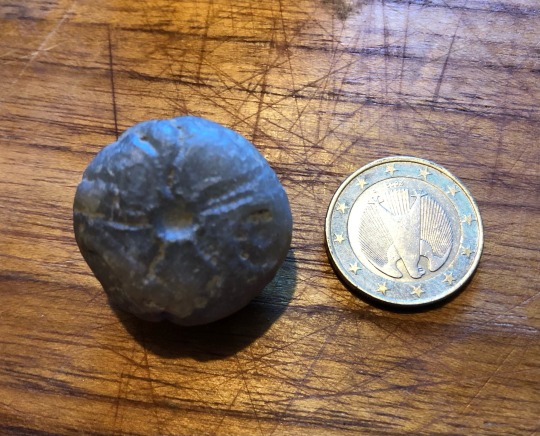

Found this echinoids in flint today afternoon. It’s Looks so dark Bit it is grey in color.
I went to the typical location of stone boulder piles, hills from previous finds. And picked up these echinoids.
Found this little round intakt, then the heavy bruised off.
The bryozoan mold in redish flint, and an in half shattered flint fossil of an badly Aulaxinia sulficera sponge. Not shown.
They re arrange all the nearby piles from the fields now to two places together. Each week new little earthy piles shown up and transported to the other end and vanish.
Next week i have more free time in the week , and finally rain is announced for 1-2 days.
Clean washed urchins are a lot better to find then the crusty sandy like all April onwards here.
Tonight i plan to sorting the round sponge fossils from the Wallsteine Collection so many now.
In the wait for the next wave of Northern Lights Aurora like last night here.
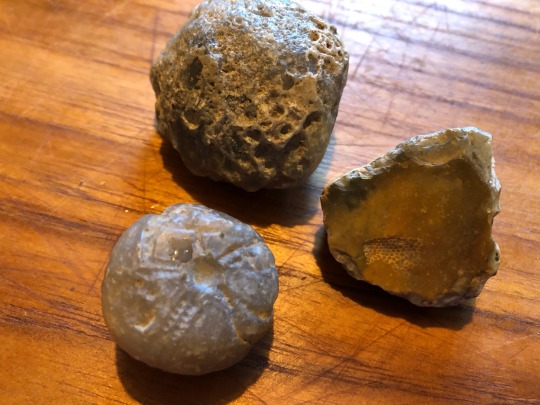

#fossils#geology#fossil hunt#echinodea#echinoids#echinoid#echinoderm#sea urchin#fossils 2024#fossils in germany
0 notes
Text
For this little Fossil Friday i hve only the finds from yesterday to shown.

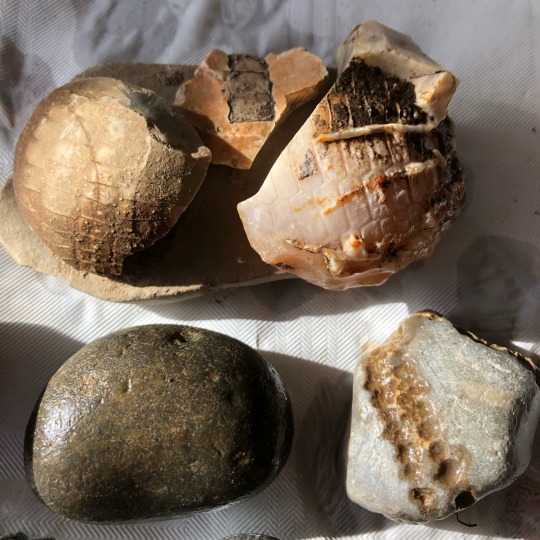
This fragmented shellsefrom the echinods in Flint . Sadly this pieces are the only traces from them.
One in grey with the hole pattern.
The flint in light orange grey with an little outet struckture pattern.
And the other heavy damaged shards in brown.
It was an free holiday yesterday so i visited One of the little necropole locations in my region. We have plenty of neolithic rock tombs, necropoles in different sizes and other in the area too.
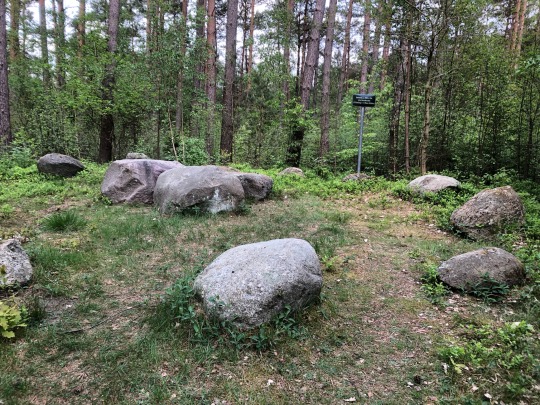
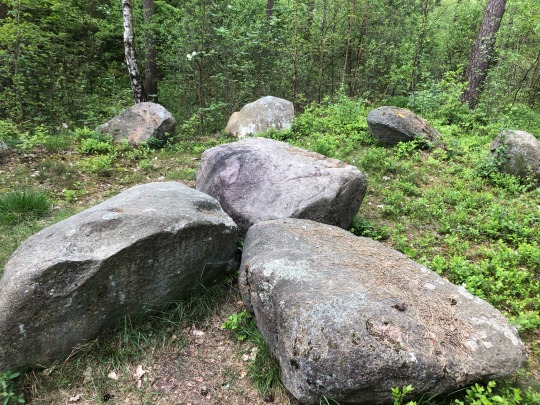
An old place for local meetings or council enforcents, problem topics in the area like middle aged crimes.
I“m not sure perhaps executions too. 👀
#fossils#geology#fossil hunt#echinodea#echinoderm#sea urchin#neolithic#fossilfriday#fossils 2024#fossils in germany#echinoid
1 note
·
View note
Text
Found only some bad damaged shards of echinoid shells from broken parts.
Sadly shattered for eternity.
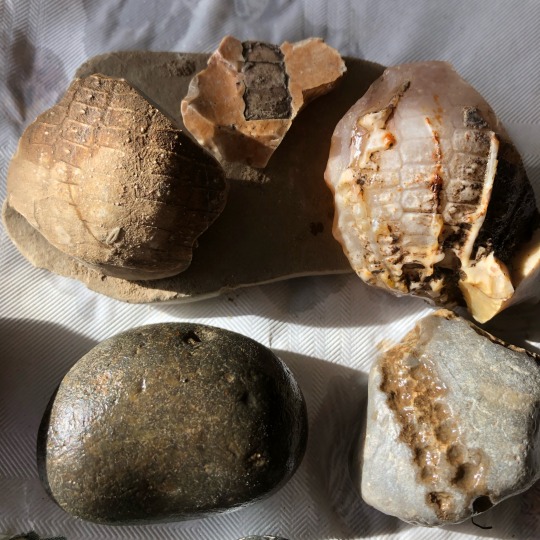
1 note
·
View note
Text
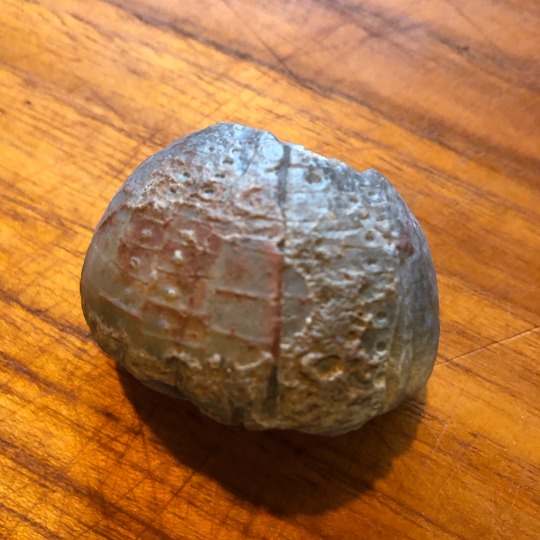
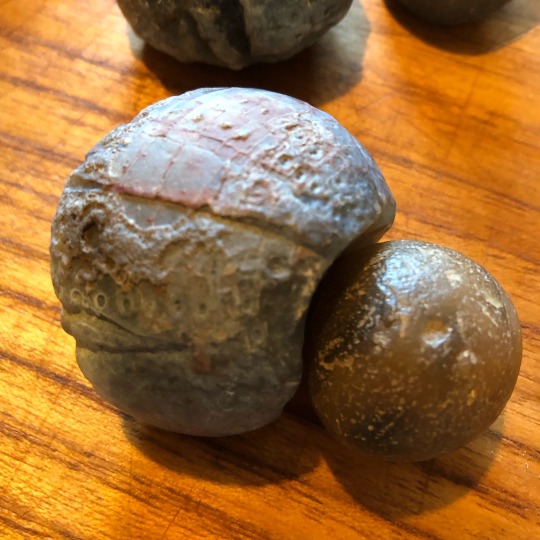
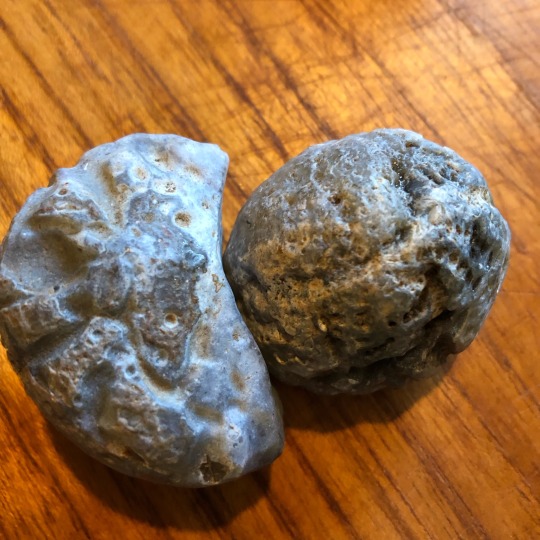
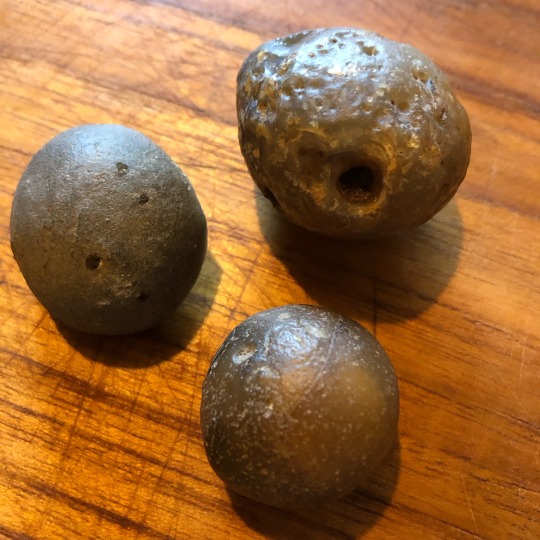
Found only two heavy damaged sea urchin echinoids, with these mini round sponges.
The fossil hunt trip today was on my walking/ jog route.
But of course i am happy about them to find, and come across to pick them up before the harvest land machines pieles or destroing them afterwards with moving.
#fossils#geology#fossil hunt#fossil collecting#fossil#echinoderm#sea urchin#fossils in germany#fossils 2024
1 note
·
View note
Text

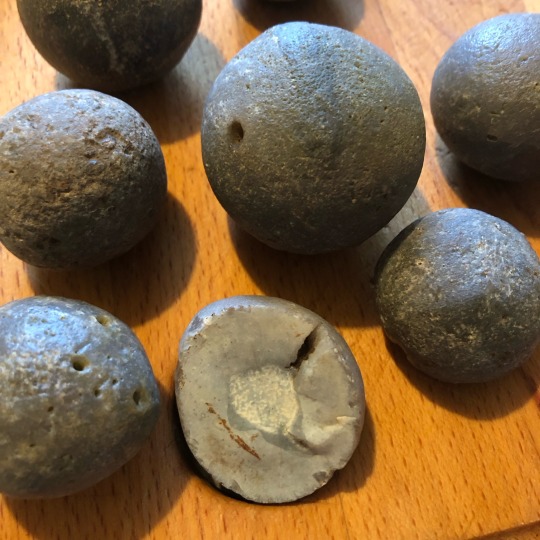
The large ovale with pattern is an Aulaxinia sulcifera, the round ones flint nodules like pebble sponges.
Some can have an lose tiny core in their innards, then they called here Klapper-stein stones. Often with 1-3 tiny tube holes. Like these here shown.
In regards now to all of the not postet collection of round ovale Wallsteine, i have now much more of these round flints of maybe sponge or clear like here.
Ich gehe inzwischen davon aus das es sich in einigen Fällen um Kieselschwamm Versteinerungen handelt.
#fossils#rocks#geology#fossil identification#fossil#fossil hunt#fossil collection#fossil collecting#fossils 2024#fossils in germany#aulaxinia sulcifera#Aulaxinia Sulficera#flint nodule
2 notes
·
View notes
Text
How are Fossils Formed and how can they be Discovered?
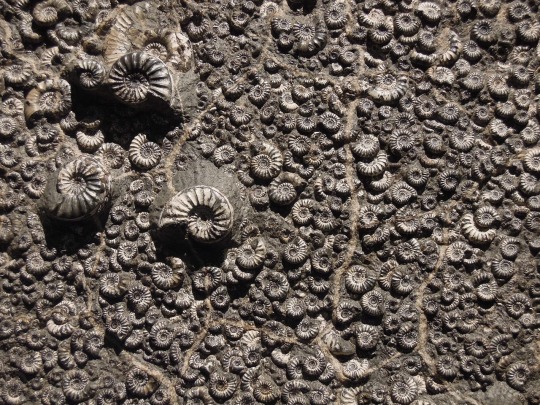
A fossil is physical evidence of a prehistoric plant or animal. This may be their preserved remains or other traces, such as marks they made on the ground while they were alive.
Fossilized remains - including fossil bones and teeth - are known as body fossils. Fossilized shells are also body fossils. Other fossilized signs of a plant or animal are called trace fossils. Dinosaur trace fossils include footprints, imprints of their skin or feathers, and poo - called coprolites.
Do all living things turn into a fossil once they die? No! Very few things do. A specific set of circumstances and conditions are needed for fossilization to occur, so it is actually a very rare event.
Most things that die rot away completely, leaving nothing behind.
Nearly all fossils we find - around 99% - are from marine animals such as shellfish and sharks. This is because they lived in the sea, where sand or mud could bury their remains quickly after they died.
Once remains are buried under sediment, their decomposition slows down due to a lack of oxygen, giving enough time for fossilization to occur.
But dinosaurs lived on land, so how did they get buried quickly enough for some of them to fossilize?
Chase Pipes, a dinosaur researcher, says, ‘Most of the dinosaur fossils we find are from animals that were living near a lake or river.
'Some died shortly before the area flooded and covered their remains in mud and silt. Others were washed into a river by heavy rain.’
Occasionally something more dramatic happened - watch the video above to find out what.
Mr. Pipes adds, 'We don’t know about many dinosaurs that lived in jungle or mountain environments. Fossils are very unlikely to form in such situations.’
The most common way an animal such as a dinosaur fossilizes is called petrification. These are the key steps:
1. The animal dies.
2. Soft parts of the animal’s body, including skin and muscles, start to rot away. Scavengers may come and eat some of the remains.
3. Before the body disappears completely, it is buried by sediment - usually mud, sand, or silt. Often at this point, only the bones and teeth remain.
4. Many more layers of sediment build up on top. This puts a lot of weight and pressure onto the layers below, squashing them. Eventually, they turn into sedimentary rock.
5. While this is happening, water seeps into the bones and teeth, turning them to stone as it leaves behind minerals.
This process can take thousands or even millions of years.
Mr. Pipes adds, 'The water leaves mineral crystals behind in spaces in the bones. Therefore, dinosaur fossils often have a sponge- or honeycomb-like texture: the internal bone structure has been preserved.’
Tree fossils, also known as petrified wood, form in the same way. Therefore, it’s possible to count the growth rings of some fossil trees.
How do we find fossils when they’ve been buried under millions of years’ worth of rock? It’s down to a combination of uplift, weathering, and erosion (plus luck).
Earth’s surface is broken up into huge, irregularly shaped pieces - tectonic plates - that fit together like a jigsaw. These plates drift around very slowly, driven by heat from within Earth.
In certain parts of the world, these plates will collide. This can force areas of rock together and push them upwards. In the most dramatic instances, such uplift can form mountain ranges. Therefore, fossils of marine animals can be found at the top of Mount Everest.
In places that were once covered by huge, heavy ice sheets that have now melted, rocks also undergo uplift.
Rocks can also be pushed up slowly by new igneous rocks forming underneath them.
Uplift is only part of the story. Weathering and erosion from wind, rain, ice, heat, and rivers break rocks apart and wash the fragments away.
Mr. Pipes says, 'It can take millions of years, but gradually fossils become exposed at the surface where we can find them.
'Because of how they form, fossils occur in sedimentary rocks. So, if you’re going fossil hunting, that’s where you should look.’
2 notes
·
View notes
Text
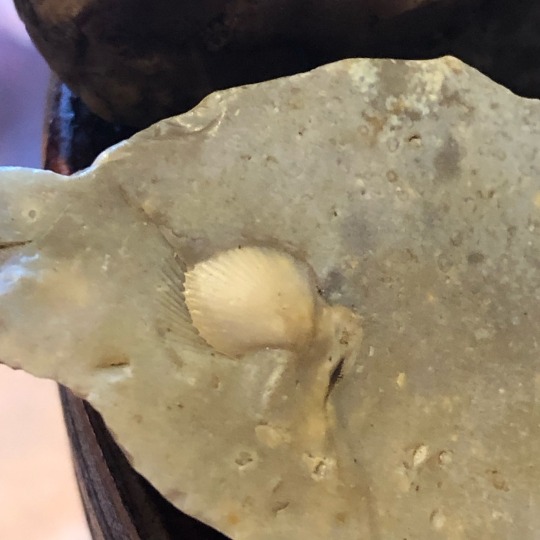

These are the last pictures from the today finds of nearby common fossils from myself. It was an good trip for the local walking on nice weather with these finds.
Nice echinoderm chestnut size and the new shard tiny mussel mold.
The next fossil hunts will be to the previous areas from the other referring posts. There must more of them to digging out or find to picking up.
One of the real big pieles of stones is already gone, within all of the potencial fossils. 🥺
#fossils#rocks#echinodea#echinoderm#sea urchin#gastropods#fossil hunt#fossil collecting#fossils in germany#fossils 2024
1 note
·
View note
Text


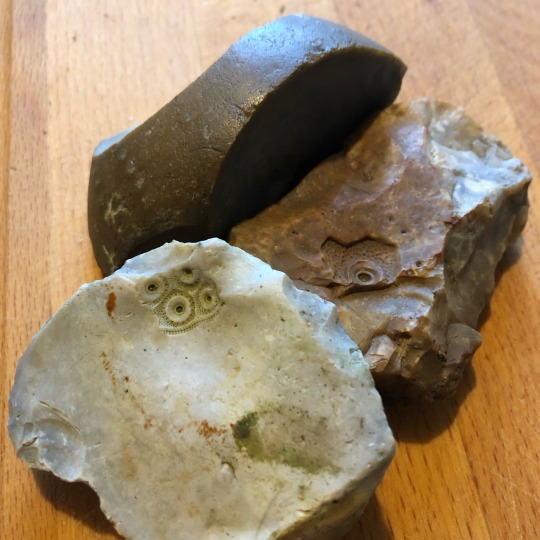
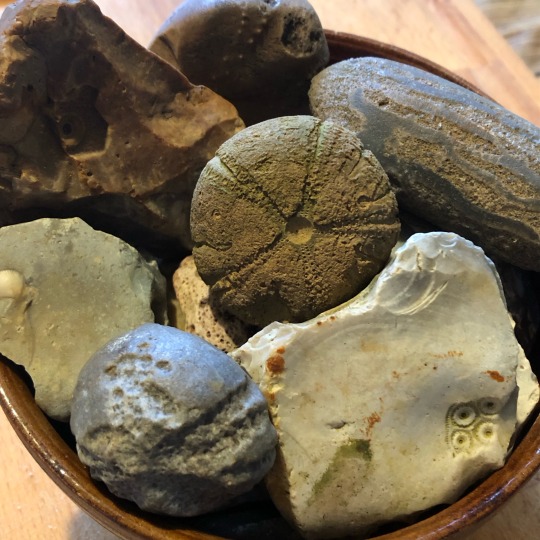
Went to an other really big and old „hill“ of piled up stones, all from the surrounding fields of the neighborhood district lands. A few km away.
The piele is huge, from two siedes new stones earth from autumn + spring, with the other sided really well washed from rain.
On the top some vegetation with growing little to medium sized threes now. The above middle area also clean full of boulder pebbles and flint.
Found these today, pieces of flint urchin echinoderm molds, ( the tiny round 🐙 sucker like pattern imprints irregular) from the Long lost needles.
Than the two shown nearly complete urchin skeleton Fossils.
Then the two heavy fractured part from the broken urchins und near red gray flint.
The handfull of round sponges from before and one flint shard with an tiny mussel.
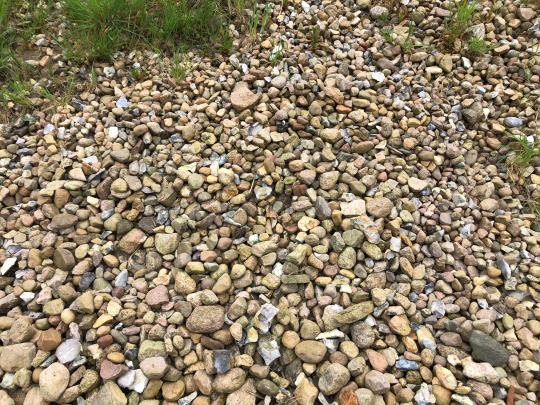
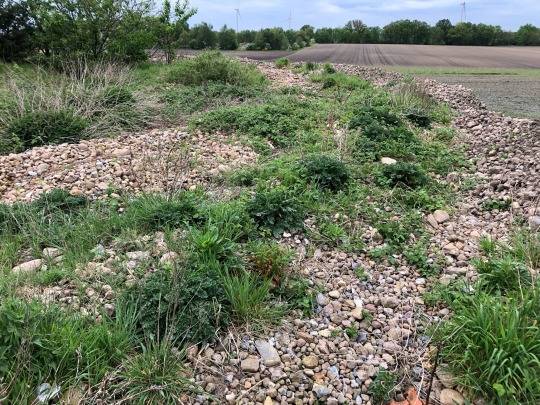
#fossils#rocks#fossils in germany#geology#fossil hunt#fossil collecting#echinodea#echinoderm#sea urchin#aulaxinia sulficera
1 note
·
View note
Text
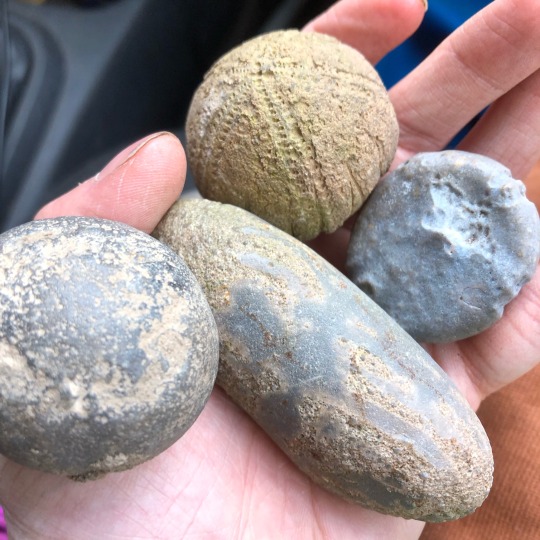

Die Fossiliensuche geht weiter !
Found some fossiziled echinoderm with an handful of round amount of Aulaxinia sulcifera sponge in flint.
Again he and his long dead dry urchins !!
One round is fully complete with no cracks.
11 notes
·
View notes
Text
I could going out on the weekend to the next fossil hunt maybe 🤔
The weather is a lot warmer now and i could take a few photos from some necropole neolithic dolmen , hunenbeds from my surrounding.
But the route from some locations are the opposite direction from the last finds then. 🤔
A few within under 15 miles and more so on.
We have plenty of them, some in the wilds or the on praised archeological locations. All the year visited from maybe to many tourists.
But i‘m not good in taking good pictures for big scale. 📲📸🖼️🤔
I passed some each on my jog route, but forgetting it each time to take pictures. All the time or its full with people.
0 notes
Text
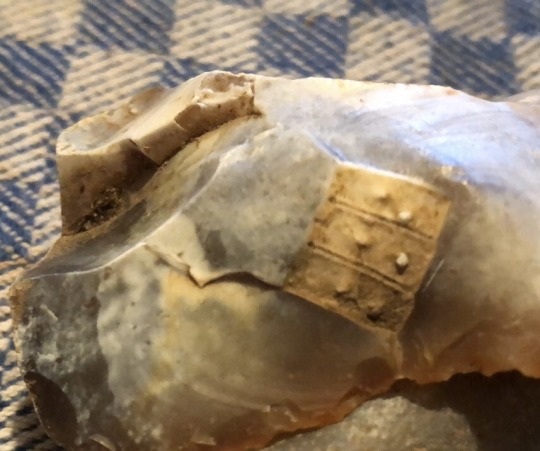
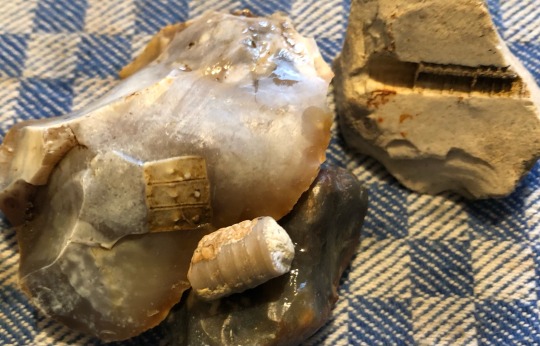
Pic 1 found recently today.
After searching, digging in the stone pile for 4 hours. Got nothing from it of interesting stones.
I got from one end trough to the end and piled over half of it. No fossils in this spot.
No Echinoid fossils or molds. What an difference to yesterday.
But i got this flint shard with the molding.
Please be some sort of trace or molding from an crinoid stem.
Perhaps maybe. I have found nothing like crinoid parts here in all the years or traces of any of them nor tiny pieces.
In my region it’s like there where to rare or no good sedimented condition for their fossillization, or to easy to errode in the long time ago.
@ what suggest you my followers ? 👀
The crinoid stem part came from the cosmos fossil kit to buy.
3 notes
·
View notes
Text

So G.E.M Dukemon Crimson Mode figur by Megahouse is now under the Omegamon Merciful Mode figur also in my vitrine. I have the feeling now after the years the metallic paint is now on some parts like the crimson & gold building fissures…. Or an play with the light.
I got no sleep it‘s already 3 : 00 AM.
Then i considered to putting out GEM Beelzebumon riding on the Behemoth bike- heavy amazing ass looking expansive figure- the level under GEM UlforceVeedramon which is a lot taller in the vitrine.
I can switching the Ulforce with Omegamon MM but Ulforce is a lot heavier on thin glass.
Beelze is now playing with the Tamers & Partners smaller figures on the same base 😅
between the only two Next Edge mini figures of NX Dukemon & NX Alphamon Oryuuken in my collection.
4 notes
·
View notes
Text
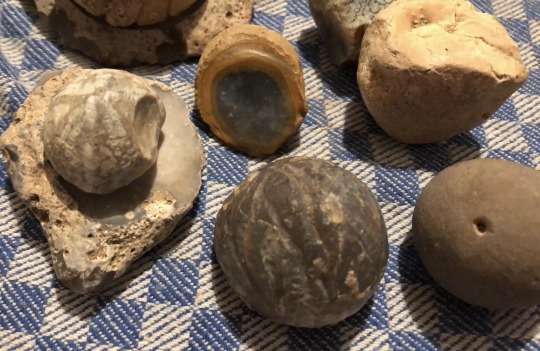


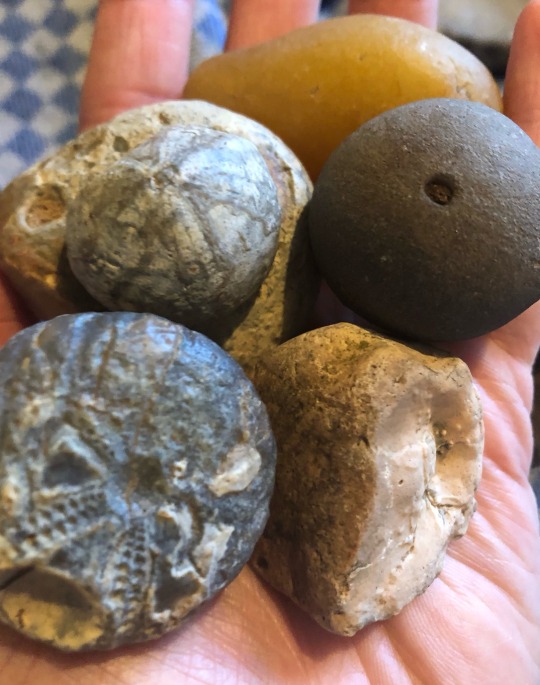
The new sea urchin fossilized skeleton as flint cores. To bad it’s to late for fossil friday.
Four in total with the fragmented clay colored not in flint.
I was again on the same locations from before, and every time i find new ones.
Again no finds or tracks of other urchin forms like the loaf or heart shaped from some other relatives. Never here to see the stings of some piece.
Precious little echinodem. :D an great find on a nice warm day today.
Also i got two new larger ceramic mugs in glazed brown earth look as container for them.
#fossils#rocks#fossil hunt#fossil collecting#echinodea#echinoderm#sea urchin#fossils 2024#fossils in germany
8 notes
·
View notes
Text
On the search of Fossils now!!! Again. :D
The weather and temperature is good today with the last raining days from the week. And now sunny too!
Tomorrow i will dig in the nearby pile again.
Edit: got the first little urchin !!!!
9 notes
·
View notes
Text
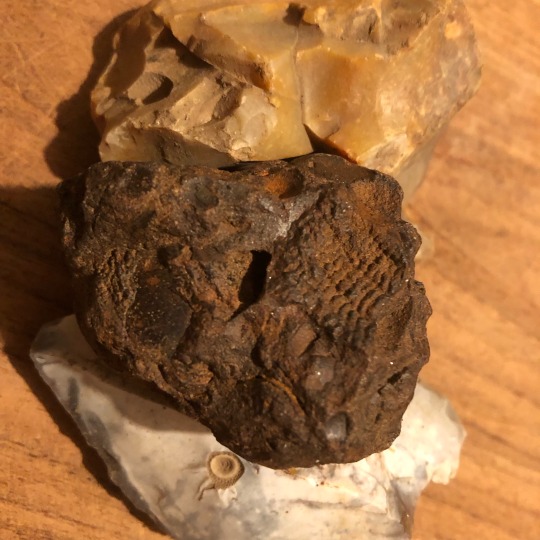
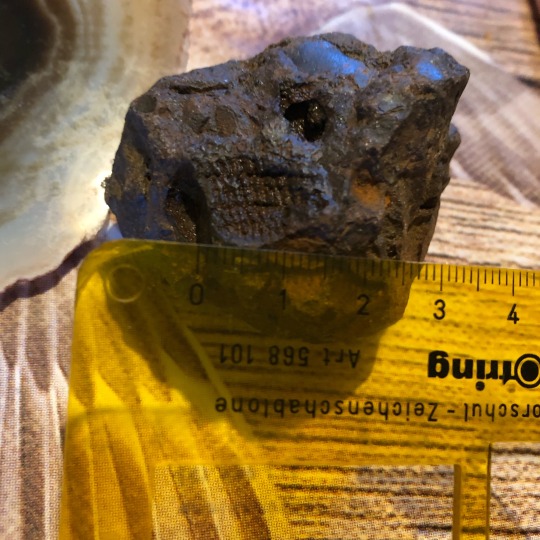
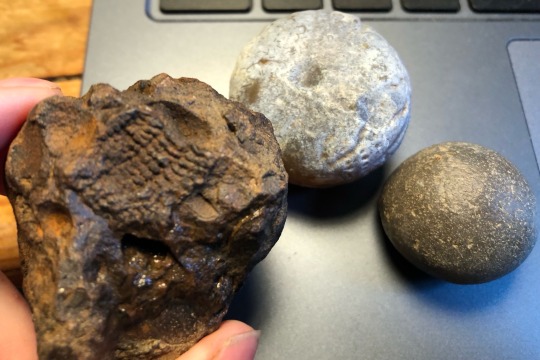
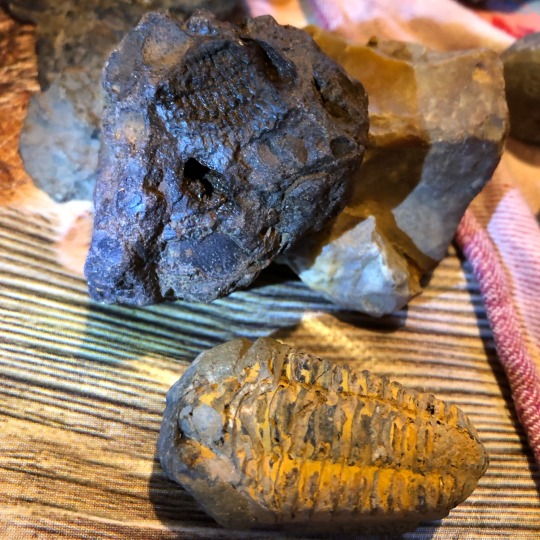
The last wednesday, i found the round urchin from before with this mold of an rare fossil in my area. I suggest if, it is the case. 🔍👀
Absolutly rare to seen in the northern region of germany, myself not knowing these are also here to find.
I havent seen those before on the search for minor fossils and rocks on sand and land, without any local modern river or mountains in the near area.
Likely an mold of an tiny trilobite, the form with an missing head piece probably are on the missing other side of the rock.
The rock is not flint, some other sediment stone in rusty brown color with little metallic spots held in light.
After washing, it retains moisture longer then other stones in drying.
The print mold has the size of an fingernail.
Identification where appreciate great to know of its an case for an trilobite family speciemen or some other suggestion what its belongs of pattern in rock.
It would be great to know & also for other rock fans with maybe have seen those pattern .
I know nothing about limestone variations in my area, and seen not common these stones or fossils from them here myself.
Super lucky, and it does resembles the larger trilobite in contrast of an mold in the lining struckture.
14 notes
·
View notes
Text
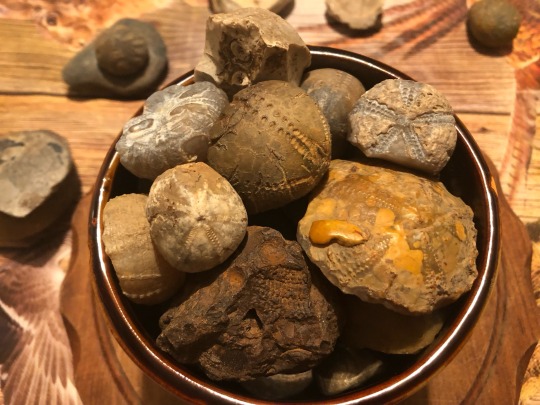
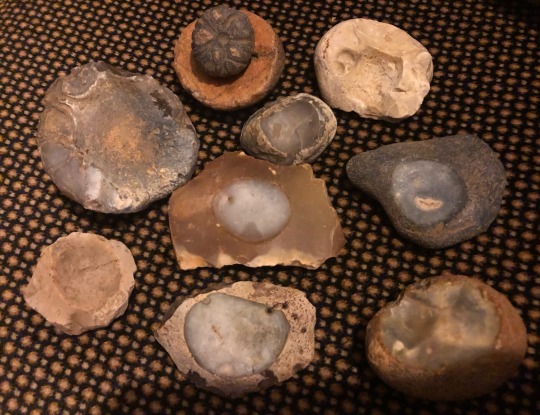
After searching the echinodem fossils back from March to today, sorting out from the other fossils in my Collection, with adding the flint urchins back from the last years to the others.
Now there are two medium sized cups / bowls full with the pieled up - garlic sized round sea urchins.
It’s a lot now. If i had an aquarium tank or dry terrarium like for reptiles, they were pretty decorations too.
For the photos or presentation use, i put the round or halfed ones in this shards of coloured flints with the fractured round mold, flat flint breaks a lot like this and are often to find.
They are nice podest or saucers for them and for round polished stones.
0 notes
Text
I use some of the broken fragments of the bigger parts of urchins for the smaller fossils put on top, as an podest.
The cutted open side with blue, white and red ones are an great little contrast to the others.
So have the sadly destroyed urchin und some Parts an use and are to seen among with the other fossils in the Collection.
1 note
·
View note